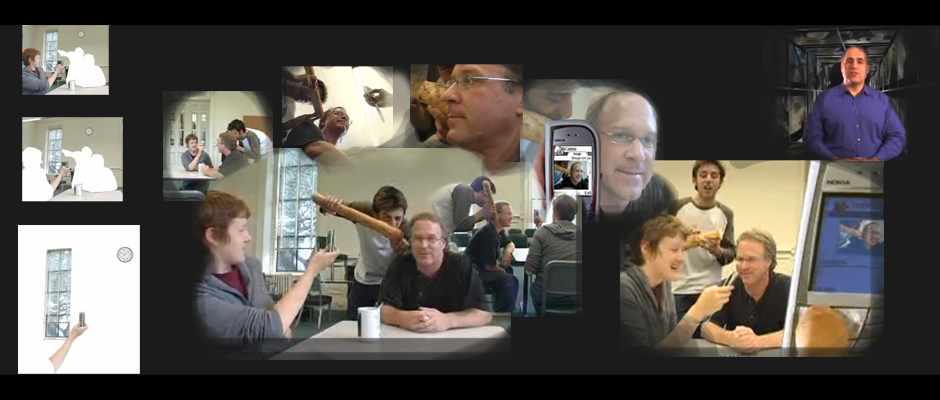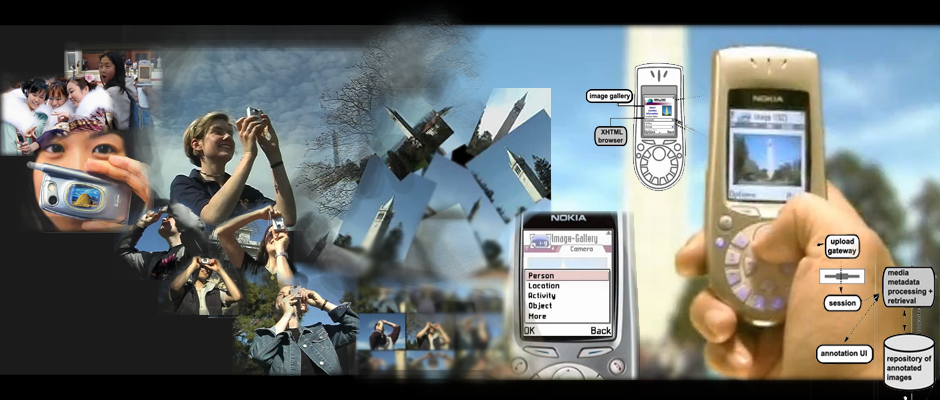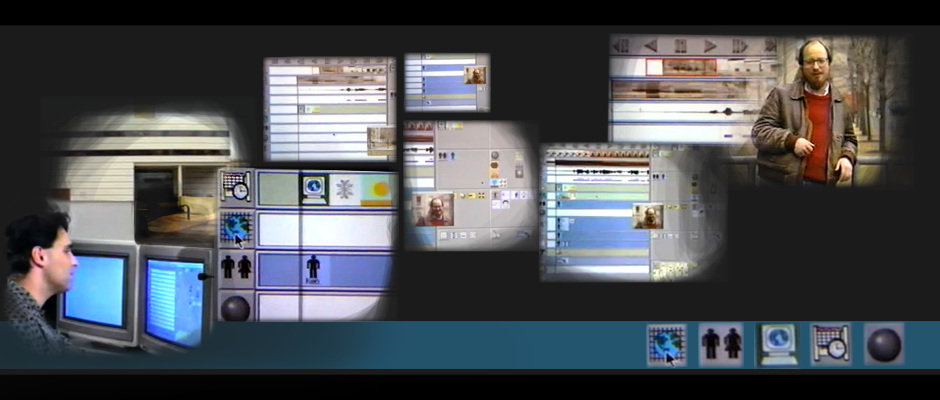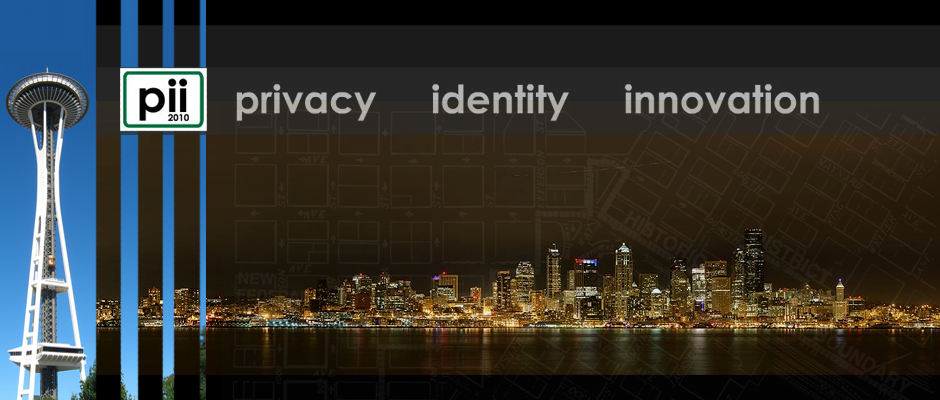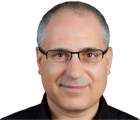Demonstrating the automation of music and video synchronization, Numb Celery uses automatic media editing functions to automatically synchronize video of celery chopping to the guitar lead in U2’s song ‘Numb’ from the Zooropa CD.
Recorded at “24/7 — A DIY Video Summit” at the Institute for Multimedia Literacy, School of Cinematic Arts, University of Southern California, Los Angeles, CA, USA, on February, 09, 2008. Invited By: Prof. Mimi Ito.
Active Capture software and interaction design automate the capture of stills and video for, and of, users. By integrating capture, processing, and interaction, Active Capture automates the traditional processes of direction and cinematography. Using real-time media analysis in an interactive control loop, Active Capture software structures the user’s interaction with a capture device to record reusable, annotated media assets.
Audio Recording of Invited Talk At:
TEXT & IMAGE: FROM BOOK HISTORY TO “THE BOOK IS HISTORY”
Thursday, February 1, 2007 | 9:00AM to 4:00PM |135 Humanities Instructional Building
Friday, February 2, 2007 | 9:00AM to 5:00PM | Calit2, Room 1100 (California Institute for Telecommunications and Information Technology)
Co-sponsored by HumaniTech®, the PhD Program in Visual Studies, Network & Academic Computing Services (NACS), the Humanities Center, the International Center for Writing & Translation, the Office of Research and Graduate Studies, and the Departments of History and Comparative Literature.
This conference explored media history from movable type to the most recent debates about text and image, including the tensions between image and writing, from hieroglyphs to the web, from automatic type-setting to film title sequences, and from motion graphics in broadcast media to issues around images and writing in computer-mediated communication. It included conversations on book history, library acquisition and archives, the Google library initiative, digital libraries, and copyright.
Talk Abstract:
The emerging sociotechnical ecosystem of billons of cameraphones around the world is enabling new forms of “writing” which embody and extend poststructuralist conceptions of “text”. By recording and correlating a variety of explicit and implicit human behaviors that were heretofore invisible and impermanent, networked mobile media computing will redefine what we think of as language, writing, the book, text, and the historical record. In a world where explicit and implicit human activity on the scale of billions of people (their presence, attention, and relationships, and their media production, reception, description, and sharing) can be computationally represented, processed, and visualized, we are creating a new collectively authored and read “book of life”—a text which in the words of Roland Barthes is a “social space which coincides only with a practice of writing.”
Taking place August 17-19 in Seattle, pii2010 will explore how privacy, identity and innovation are evolving in the digital age, and how to strike a balance between protecting sensitive information and enabling new technologies and business models.
[Need icons for these…]
Plancast

